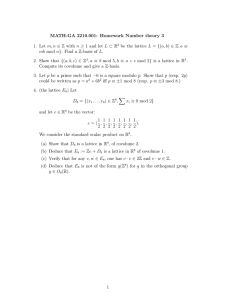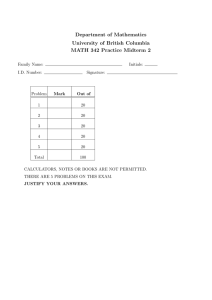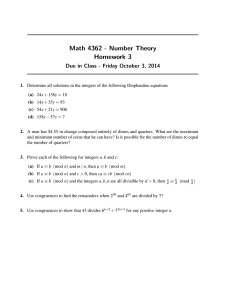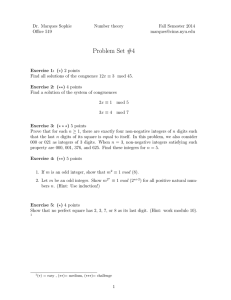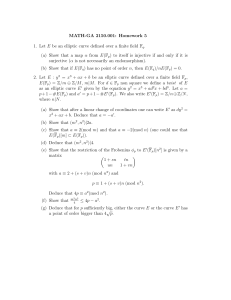MA2316: Introduction to Number Theory Tutorial problems for January 30, 2014
advertisement
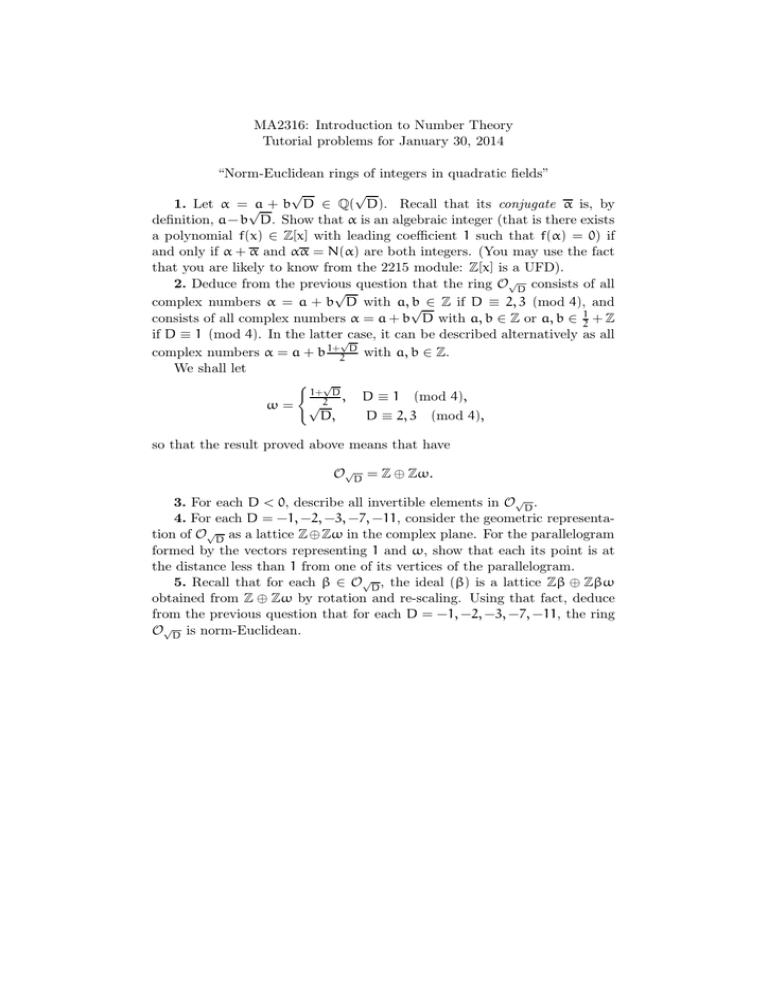
MA2316: Introduction to Number Theory Tutorial problems for January 30, 2014 “Norm-Euclidean rings of integers in quadratic fields” √ √ 1. Let α = √a + b D ∈ Q( D). Recall that its conjugate α is, by definition, a− b D. Show that α is an algebraic integer (that is there exists a polynomial f(x) ∈ Z[x] with leading coefficient 1 such that f(α) = 0) if and only if α + α and αα = N(α) are both integers. (You may use the fact that you are likely to know from the 2215 module: Z[x] is a UFD). 2. Deduce from the previous question that the ring O√D consists of all √ b ∈ Z if D ≡ 2, 3 (mod 4), and complex numbers α = a + b D with a, √ consists of all complex numbers α = a + b D with a, b ∈ Z or a, b ∈ 21 + Z if D ≡ 1 (mod 4). In the latter√case, it can be described alternatively as all complex numbers α = a + b 1+2 D with a, b ∈ Z. We shall let √ 1+ D , D ≡ 1 (mod 4), ω = √2 D, D ≡ 2, 3 (mod 4), so that the result proved above means that have O√D = Z ⊕ Zω. 3. For each D < 0, describe all invertible elements in O√D . 4. For each D = −1, −2, −3, −7, −11, consider the geometric representation of O√D as a lattice Z ⊕ Zω in the complex plane. For the parallelogram formed by the vectors representing 1 and ω, show that each its point is at the distance less than 1 from one of its vertices of the parallelogram. 5. Recall that for each β ∈ O√D , the ideal (β) is a lattice Zβ ⊕ Zβω obtained from Z ⊕ Zω by rotation and re-scaling. Using that fact, deduce from the previous question that for each D = −1, −2, −3, −7, −11, the ring O√D is norm-Euclidean.



